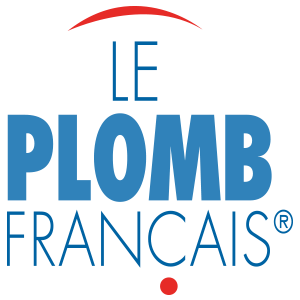LEAD FROM ANCIENT TIMES
![]()
FROM ANCIENT TIMES, lead has been used for its resistance to corrosion.
In general, it better resists the usual atmospheric and chemical agents, as well as water, provided these are not corrosive waters, such as water that is too pure and with all mineralisation removed, particularly where oxygen is present, or water containing weak acids.
In sea water, the resistance of lead is also very satisfactory.
NATURAL PRODUCT
![]()
lead is a constituent mineral of the Earth’s crust
It contributes to a reduction of the greenhouse effect:
It’s melting point is 327° C.
The manufacture of rolled lead sheet therefore consumes less energy compared with that needed to make competing products.
CHOOSING LEAD is to protect future generations.
Using lead is to counteract against weathering to come.
Why build your home with materials that last 10 years? You must make a choice! Would you choose materials with an expected service life of less than 20 years, which are difficult to recycle, or choose lead which provides you with natural protection with a service life of greater than 100 years and is perpetually 100% recyclable?
Our ancestors understood lead well and trusted it, and its responsibility for protecting large buildings.
TOO PRECIOUS TO BE THROWN AWAY…
![]()
As the prices of raw materials continue to go up, particularly those of metals, from an economic view, there is an increasing interest in envisaging as efficient as possible a use of raw materials.
In this context, controlling the life cycle of materials is of paramount importance.
Evaluation of the life cycle of raw materials is not just considering their production cost and their service life, but also how effective they are at being recycled, and its inherent cost. An efficient life cycle often indicates the long-term viability of a raw material. There is no raw material the life cycle of which is more efficient than that of rolled lead sheet.
Its long service life, its high residual value, its efficient recovery network and its low recycling cost make lead sheet a product of the future.
RECOVERY…
While most areas of industry are still developing closed-cycle management systems, the rolled lead sheet industry has already made inroads into this area. Recovery and collection networks already exist for rolled lead sheet and have been operating in various European countries for several years. It has resulted in the fact that rolled lead sheet is hardly ever disposed of, rather it is always recovered to be recycled.
RECYCLING…
Recycling has become more and more essential, for both economic and environmental reasons. Recycling of used materials is an alternative to disposal and depletion of raw materials. Rolled lead sheet is among one of the key products in the area of recycling. “At the moment, more than 90% of rolled lead sheet sold in Europe comes from recycled material,” underlines Thierry BOON, member of the steering committee of the European Lead Sheet Industry Association (ELSIA).
Theoretically, the life cycle of rolled lead sheet can be renewed indeterminately: its quality remains unchanged, whatever the duration and frequency of its use over the years. Furthermore, the low melting point of lead makes it very economical to recycle.
All these aspects make rolled lead sheet a model reusable raw material, from which artists and traders can benefit in these times when the prices of raw materials are particularly high.
USES OF LEAD
![]()
FROM ANCIENT TIMES, lead has been used for its resistance to corrosion.
The natural malleability of lead allows it to be reformed into the most diverse of shapes, its unchangeability and its resistance to weathering or chemical attack provide high safety as well as its legendary durability, which guarantees our heritage. Mainly used in building for covering and waterproofing and in various industrial sectors, lead always provides a durable solution.
LOST USES
- Lead piping: for several years, plumbers have preferred plastic materials.
- Lead oxide in petrol: since 1st January 2000, the incorporation of lead-based anti-knocking agents has been prohibited.
- Lead painting frequently used in homes until 1948.
In recent years, it is only used in industry.
